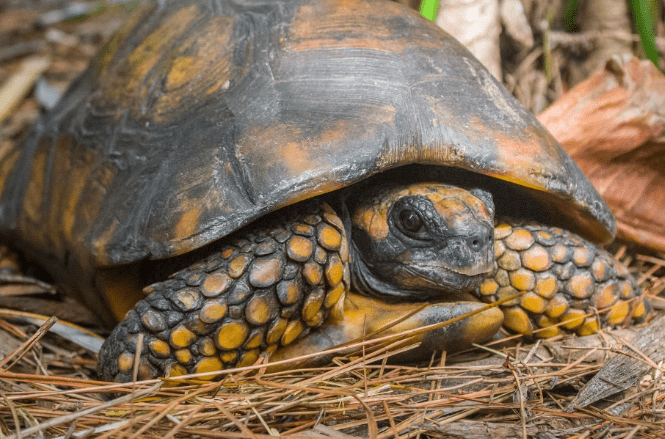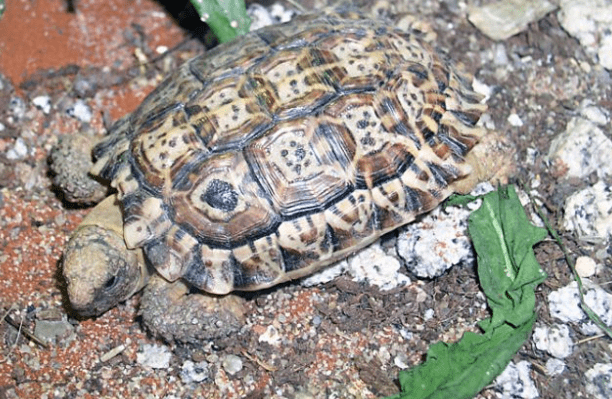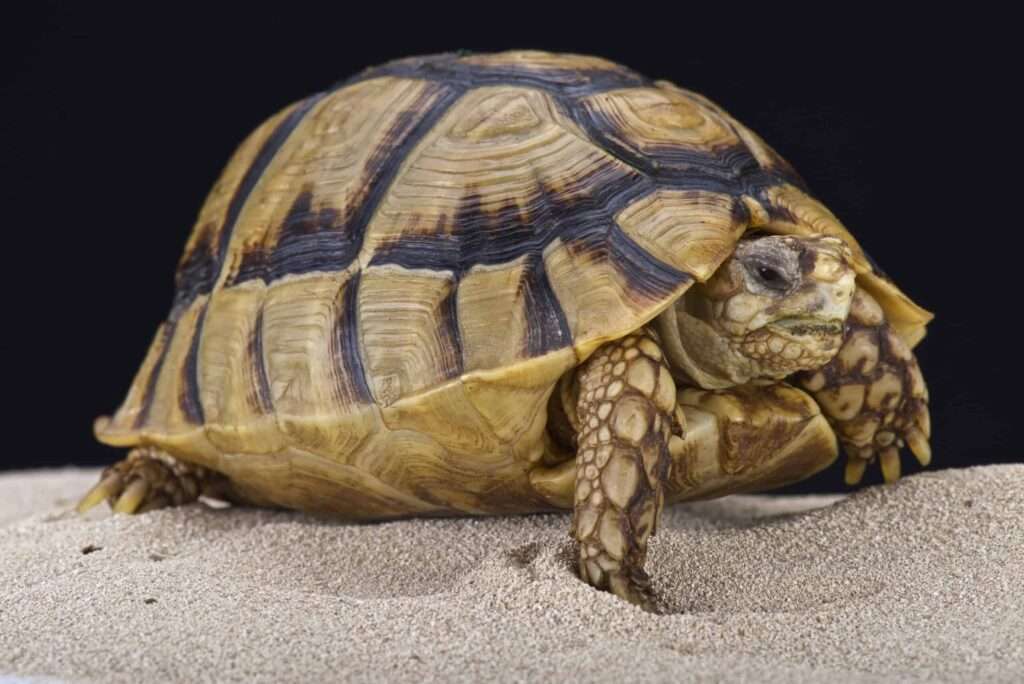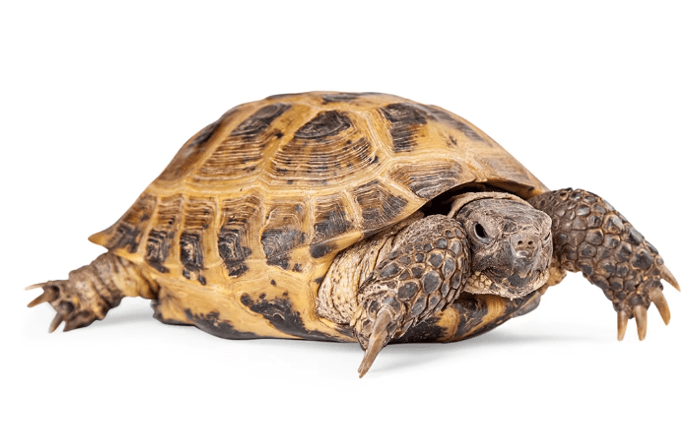
Description
The Red-footed tortoise (C. carbonarius) and the Yellow-foot tortoise (Chelonoidis denticulatus) are both members of the family Testudinidae. The black Yellow Footed Tortoise has a horizontal bar behind each eye, many yellow head scales, and other distinctive features. The coloration varies quite a bit; the legs and head frequently feature orange, yellow, or red patches. The top of the shell is black with a tiny, unmistakable yellow band surrounding each shell scale.
Habitat
There are yellow-footed tortoises in South America’s Amazon Basin. Their preferred habitats are grasslands, savannas, dry forests, or belts of rainforest close to open terrain.
Behavior
Being a diurnal animal, yellow-footed tortoises are active during the day. They are regarded as nomadic in their migrations and live and spend their time alone when they are not reproducing. Because of their shell and tiny limbs, tortoises are unable to communicate effectively through visual means. Yellow-footed tortoises communicate with one another through body language and a raspy voice that resembles a newborn cooing. They always retreat inside their shells when they perceive danger.

Keeping as Pet
Enclosure Size
A yellow-footed tortoise can be housed in a number of different ways. For simpler temperature control, the majority of owners will keep them inside. However, you can also keep them outside if you reside in a warm, muggy climate.
These tortoises do best in big tubs or turtle tables for indoor habitation. You can get away with an enclosure that is only two feet wide by three feet long for tiny hatchlings. When they become adults, though, they require a space that is at least eight feet long by four feet broad. Because yellow-footed tortoises can’t climb very high, their home’s walls only need to be 12 to 18 inches height.
Temperature
A temperature gradient is preferred by yellow-footed turtles. The temperature within the cage may range from 70 to 75 degrees. But one place needs to be considerably warmer. Creating an 85–90 degree warm zone using a basking lamp.
Humidity
If you want to maintain your yellow-footed tortoise in captivity happy and healthy, you must put forth all necessary effort to build a high-humidity habitat. Aim for 80% or more relative humidity. This can be done by continuously watering the habitat or using an automatic dripper system.
Food & Diet
These behemoths are not particularly swift or nimble animals. They consequently scavenge in the wild for nourishment. They are opportunistic omnivores that appreciate plant-based cuisine and the odd high-protein snack. A yellow-footed tortoise’s diet should include a variety of fruits and leafy greens. Make it intriguing! Your tortoise will receive a balanced diet of vitamins and nutrients if you provide it lots of variation.
Give out pinky mice or earthworms two to four times each month as a protein source. To make sure that all of their dietary requirements are met, you can also dish up some prepared items.
Here are some good foods to include in their diet: dandelion greens, zucchini, collard greens, romaine lettuce, kale, clover, grasses, carrots, chicory, alfalfa, endive, mustard greens, squash and mango.
Table





